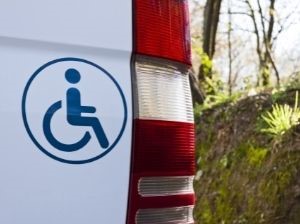
Staying at home as you age is possible, but it requires some caution and preparation. Whether you are aging yourself or simply looking to keep elderly loved ones safe, you should keep several things in mind when thinking about home safety. Here are 11 home safety tips for elderly people, from shower chairs to senior clothing:
Conduct a home safety audit.
Go through your house and make a note of every possible hazard or obstacle. If a throw rug might trip you up, put it on the list. If a round door knob is hard to turn, put it on the list. If the water temperature is too hot and might scald you, put it on the list. Once you’ve finished your “audit,” figure out how you will address each item on the list to make your home as safe as possible.
Decide if your house is worth the effort.
Based on your audit, decide if your home is well set up for you to age in place, or if you might be better served either moving to a new home or even a senior living facility. Some homes, especially older houses, simply aren’t suitable for aging in place due to the extensive renovations required to make it safe.
Determine if you’re a good candidate for aging in place.
Sometimes, it’s not your home that is the complicating factor for aging in place. If you have certain physical or mental conditions that make it difficult to live on your own, then you might actually find it safer to move into an assisted living facility instead of struggling on at home. Have an honest conversation with your loved ones about your prognosis and how you are coping with living at home so far.
Keep the floors clear.
Trip and fall hazards are one of the biggest concerns for home safety. Remove any loose rugs and move any extension cords that might trip you up. Apply non-slip wax to hardwood floors to reduce slickness. If you have pets that constantly get underfoot, consider giving them to a family member and visiting them regularly instead of keeping them at your house 24/7. Always wear non-slips shoes, such as Velcro shoes for women, even when inside to prevent falls.
Widen doorways and remove thresholds.
This is more of an extensive home renovation, but it can really make a difference for people who use wheelchairs and walkers. Making doorways wider allows them to pass through easily without having to wedge their walker or wheelchair through the door. Removing thresholds also eliminates the need to “step over” into the next room, a move that can lead to tripping and falling.
Update the bathroom.
Install grab bars near the toilet and shower to provide support, and also consider placing a shower chair in the shower as well. Use rubber bath mats and add non-slip floor tape to the shower or tub as well as the floor to increase traction. Replace the toilet seat with a raised toilet seat, sometimes also called a high profile toilet seat. If you have a tub, you might want to consider getting it renovated and replacing it with a walk-in shower instead.
Assess the kitchen.
Move any appliances and utensils that you regularly use to chest height so you don’t have to bend over or get up on a step stool to reach them. Choose light but sturdy pots and pans that are easy to move, and utensils with wide, rubbery grips for stability. If you use a lot of appliances with heat, consider getting models with automatic shutoff so you can’t accidentally leave them on. Regularly clean out the fridge and pantry so you don’t eat expired food.
Put up more lights.
Test the lights in every room to make sure that you can clearly see the floor. If you cannot, then add more lights or swap in brighter bulbs. You might need to look into solutions beyond just overhead lighting — for instance, there are puck lights specifically designed to illuminate stairways, including motion-sensitive models. Promptly replace any bulbs when they burn out and keep spares on hand. Make sure that you have nightlights in all the hallways, as well as bedrooms and bathrooms.
Make the stairs safe.
Stairs in particular create a tripping and falling hazard. You may need to consider installing a stairlift for indoor stairs, or replacing outdoor stairs with a gently sloped ramp. If you can still navigate the stairs, then get rid of any loose runners and replace them with non-skid treads. You might also need to paint the tops of the stairs different colors or otherwise find a way to differentiate the change in height, especially if your vision is impaired.
Remember regular safety tips.
Seniors need working smoke and carbon monoxide detectors just like everybody else. You might also want to look into getting a home security system if you don’t have one already, especially if you spend a lot of time alone at the house. You might also want to look into getting a senior medical alert system so that if an emergency does happen, help will be on the way quickly.
Don’t forget other fixes.
Not every fix involves home renovations. For instance, wearing adaptive clothing with easy-to-work closures makes it easier for seniors to keep dressing themselves even when they can no longer work buttons or zippers. Keep an eye out for other solutions like this and you might be surprised how much they can improve your quality of life.
With home safety tips in mind, you or your loved one will be able to age in place. It will take some prep work, but you can make many different homes safe for elderly people.








